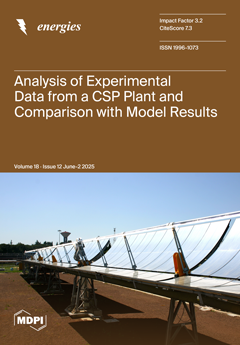The building sector, responsible for approximately 40% of global energy consumption, is increasingly embracing nearly zero-energy buildings (NZEBs) to promote environmental sustainability. Focusing specifically on single-family houses, this review systematically examines current NZEB practices across Europe, aiming to identify regional adaptation strategies and
[...] Read more.
The building sector, responsible for approximately 40% of global energy consumption, is increasingly embracing nearly zero-energy buildings (NZEBs) to promote environmental sustainability. Focusing specifically on single-family houses, this review systematically examines current NZEB practices across Europe, aiming to identify regional adaptation strategies and highlight performance disparities. The primary research question explored is as follows: how do design strategies, renewable energy integration, and climate adaptation measures for single-family NZEBs vary across Northern, Eastern, Southern, and Western European countries? A key gap in the literature is the lack of cross-comparative analysis of regional NZEB approaches for single-family houses, despite their significant share in Europe’s housing sector. Effective NZEB implementation depends on interdisciplinary collaboration among architects, engineers, and energy experts to optimize building design elements, including orientation, envelope insulation, and HVAC systems, tailored to regional climatic conditions. A systematic analysis of case studies was conducted, synthesizing data on primary energy consumption, CO
2 emissions, and building envelope performance. The findings reveal regional differences: Northern Europe exhibits primary energy consumption at 27–68 kWh/(m
2·y) (mean: 48.2), Eastern Europe at 29–68 (mean: 42.5), Southern Europe at 35–42 (mean: 39.1), and Western Europe at 27–85 (mean: 51.5), with higher emissions in Eastern Europe compared to Denmark, for instance. These patterns underscore the role of climatic conditions and regulatory frameworks of the regions in shaping NZEB strategies. Despite shared goals of decarbonization and occupant comfort, significant knowledge gaps remain, particularly regarding long-term operational performance and regional comparison of other building types.
Full article





